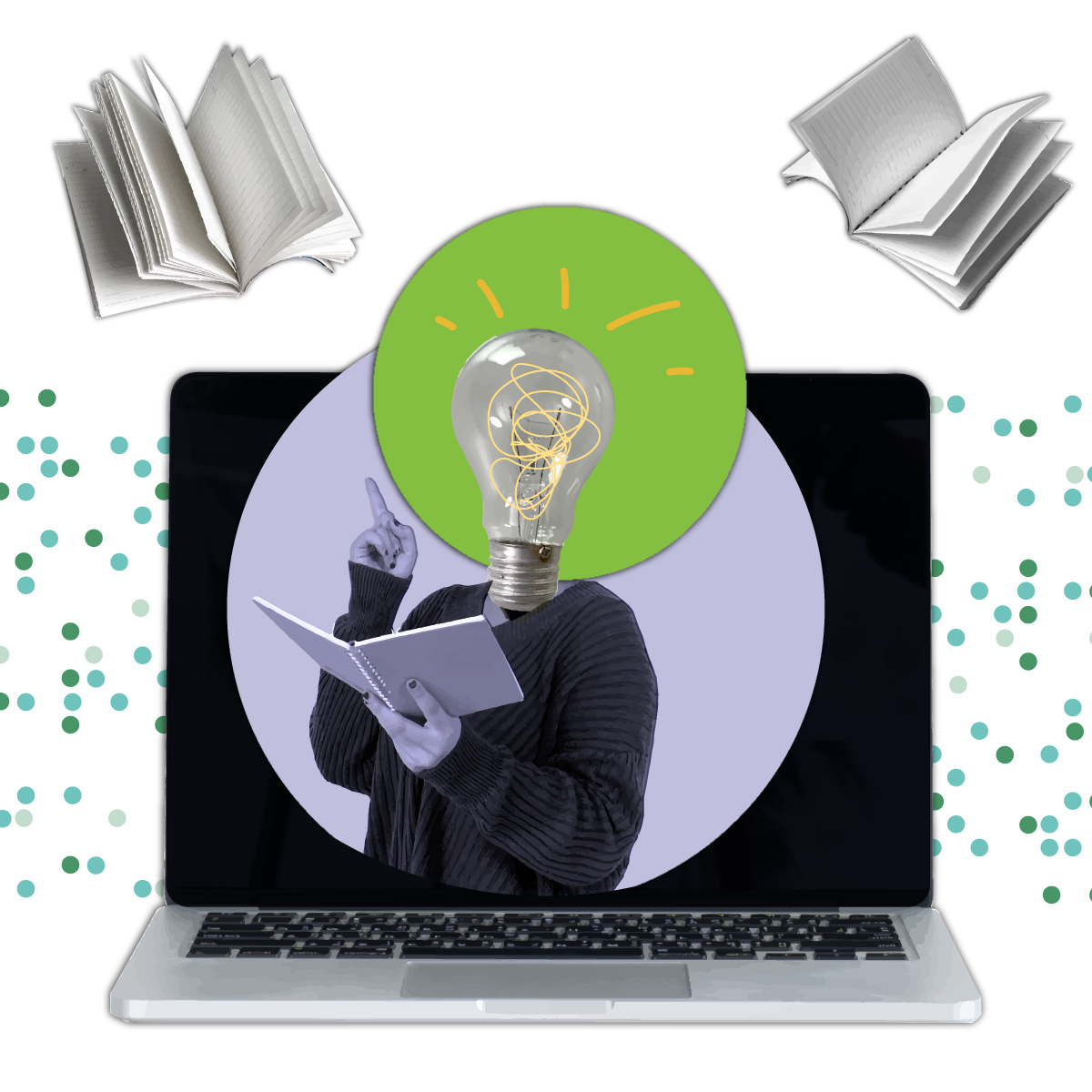Let’s face it—reading on a screen feels different.
We skim more. We forget faster. Our minds wander more easily.
And according to a growing body of research, it’s not just a feeling. Students—especially elementary-aged readers—consistently comprehend less when reading digital texts compared to traditional print (Clinton, 2019; Delgado et al., 2018; Furenes et al., 2021). But with schools investing in 1:1 devices and more instructional time spent online, digital reading isn’t going anywhere. So, how do we make it work?
Let’s dig into the research and then get practical.
Why Digital Reading Is Harder (Yes, Really)
While digital texts offer convenience and accessibility, substantial research highlights key drawbacks when it comes to reading comprehension. Studies consistently indicate that digital reading is associated with lower understanding compared to traditional print formats, particularly in situations that involve timed reading or lengthy texts. The reasons behind this comprehension gap include increased tendencies toward skimming and mind-wandering, reduced spatial memory cues provided by physical pages, and interactive features that distract rather than deepen engagement.
Here are the main findings:
- Lower Comprehension on Screens: Multiple meta-analyses have confirmed that students (and adults!) understand less when reading digitally than when reading print. The effect is strongest in timed situations and with longer texts (Delgado & Salmerón, 2021; Clinton, 2019).
- More Mind-Wandering and Skimming: Digital formats tend to invite rapid scanning rather than deep reading. Delgado et al. (2024) found that students reading digitally were more likely to skim and less likely to engage in strategic reading behaviors.
- Less Spatial Memory: Paper-based reading helps readers remember where information appeared on a page—“top of the left side,” for instance. That physical cue disappears with scrolling (Shanahan, 2023).
- Distracting Features Undermine Focus: Many children’s digital texts include interactive games or pop-ups. These might be engaging, but often reduce comprehension (Furenes, Kucirkova, & Bus, 2021).
But Here’s the Good News — We Can Teach Digital Reading Strategically!
Reading on screens isn’t going away—but it does pose unique challenges for comprehension and attention. Instead of fighting digital texts, we can empower students by explicitly teaching strategies to navigate these challenges. By embracing transparency about digital limitations, thoughtfully selecting screen-friendly texts, minimizing distractions, and promoting active, metacognitive reading practices, we can transform digital reading from passive scrolling into meaningful, deep engagement. Here are nine practical, research-backed tips teachers can implement immediately to help students become skilled, mindful digital readers.
Digital reading offers convenience and accessibility, but research shows that students frequently struggle to comprehend digital texts as effectively as print. To address these challenges, teachers can adopt intentional practices that equip students to read digitally with greater success. Here’s how:
1. Be Honest with Students About the Challenges
Students often assume digital reading is easier because screens are so familiar. However, as literacy expert Timothy Shanahan (2023) points out, comprehension typically drops when reading from devices. Sharing this openly with students helps them approach digital reading more mindfully. When students know they must deliberately focus, they actively monitor their attention and effort (Bandura, 2001), improving their overall comprehension.
2. Choose Texts That Work on Screens
Not every digital text is equally effective for comprehension. Research from Smith and Hiebert (2022) identifies key characteristics of successful digital texts:
- Balance of fiction and informational genres
- Vocabulary and comprehension scaffolds
- Visually uncluttered layouts
- Cultural and linguistic diversity
- Avoid texts overloaded with distracting interactive elements or games, as these can hinder rather than help understanding.
3. Use “Reader View” and Reduce Distractions
Digital environments often bombard students with notifications, ads, and multiple tabs. Delgado et al. (2018) found that these distractions significantly impede comprehension. Encourage students to:
- Turn off notifications during reading
- Activate “Reader View” or full-screen mode
- Avoid switching between tabs
By creating a focused digital environment, students can concentrate deeply on the text, reducing cognitive overload.
4. Teach Students to Annotate Actively
Digital texts often feel transient, leading students to passively scroll without deep engagement. Delgado et al. (2024) emphasize the critical role of active annotation to counteract this tendency. Train students to:
- Highlight main ideas digitally
- Add digital sticky notes with questions or reflections
- Summarize key points after each section
- Regularly review their annotations
These strategies actively engage readers, enhancing both comprehension and retention.
5. Chunk the Reading and Reread Strategically
Digital texts encourage quick scanning, often at the expense of deeper processing. Delgado and Salmerón (2021) suggest routines to combat superficial reading:
- Pause regularly for “Stop and Jot” after each paragraph or heading
- Conduct frequent self-checks asking, “What was the main idea?”
- Schedule timed rereads of critical sections
Structured reading practices encourage deliberate engagement, reducing skimming and enhancing understanding.
6. Help Students Regain Spatial Awareness
Traditional paper reading provides visual cues like page location, which help memory. Digital screens, however, lack these spatial anchors. Shanahan (2023) recommends digital strategies to rebuild spatial orientation:
- Bookmark key sections for easy revisiting
- Memorize distinctive phrases to use as search anchors
- Utilize headings as visual reference points
These techniques enable students to better locate, remember, and reference essential information.
7. Adjust Font and Display Settings
Visual comfort directly impacts reading comprehension, especially for younger readers. Smith and Hiebert (2022) note that simple adjustments in display settings can significantly enhance readability:
- Increase font size for easier visibility
- Add more line spacing to reduce visual clutter
- Choose sepia tones or dark mode to minimize eye strain
Personalized visual adjustments can drastically improve focus and engagement during digital reading tasks.
8. Make Digital Reading About Projects—Not Just Practice
When digital reading becomes merely drill or test prep, comprehension suffers, as Delgado et al. (2024) reveal. Instead, integrate digital reading within meaningful, project-based contexts:
- Engage students in inquiry-based projects
- Promote collaborative digital presentations
- Encourage media-rich synthesis tasks
Purposeful digital reading tasks foster deeper comprehension and more meaningful learning experiences.
9. Empower Students to Track What Works for Them
Cultivating metacognitive awareness in digital reading empowers students to take charge of their learning. Winne (2018) highlights the importance of reflective questions like:
- “What helped me focus today?”
- “What strategy improved my understanding?”
- “What new approach can I try next time?”
By consistently reflecting on their practices, students build self-awareness and become more adept digital readers.
Final Thought
Digital texts are here to stay—but their true potential depends entirely on us. Simply handing students devices isn’t enough; we must guide them thoughtfully and intentionally in using technology as a powerful learning tool. When we actively teach students to slow down, reflect, question, and engage deeply with digital texts, we transform passive scrolling into purposeful reading experiences.
Now is the moment to come together—teachers, parents, and communities—to make sure digital reading empowers rather than distracts. Let’s equip students with reading strategies that cultivate their curiosity, deepen their understanding, and nurture a lifelong love of learning. Our students are counting on us, and their futures depend on our collective action today.
Let’s help students make digital reading work for them!
Join us in the Literacy and Justice for All Movement, and together let’s ensure every student becomes an empowered, confident, and critical digital reader.
References
- Bandura, A. (2001). Social cognitive theory: An agentic perspective. Annual Review of Psychology, 52, 1–26.
- Clinton, V. (2019). Reading from paper compared to screens: A systematic review and meta-analysis. Journal of Research in Reading, 42, 288–325. https://doi.org/10.1111/1467-9817.12269
- Delgado, P., Vargas, C., Ackerman, R., & Salmerón, L. (2018). Don’t throw away your printed books: A meta-analysis on the effects of reading media on reading comprehension. Educational Research Review, 25, 23–38. https://doi.org/10.1016/j.edurev.2018.09.003
- Delgado, P., Salmerón, L., & Vargas, C. (2024). Reading comprehension and digital texts: Challenges and recommendations based on international large-scale assessments (ILSAs). Frontiers in Psychology, 14, Article 10606230. https://www.ncbi.nlm.nih.gov/pmc/articles/PMC10606230/
- Furenes, M. I., Kucirkova, N., & Bus, A. G. (2021). A comparison of children’s reading on paper versus screen: A meta-analysis. Review of Educational Research, 91(4), 483–517. https://doi.org/10.3102/0034654321998074
- Shanahan, T. (2023). Is digital text a good idea for reading instruction? Shanahan on Literacy. https://shanahanonliteracy.com/blog/is-digital-text-a-good-idea-for-reading-instruction
- Smith, J. A., & Hiebert, E. H. (2022). What does research say about texts used in elementary schools? Phi Delta Kappan, 104(1). https://kappanonline.org/research-texts-elementary-school-conradi-smith-hiebert/
- Winne, P. (2018). Cognition and metacognition within self-regulated learning. In D. Schunk & J. Greene (Eds.), Handbook of Self-Regulation of Learning and Performance (2nd ed., pp. 36–48). Routledge.



